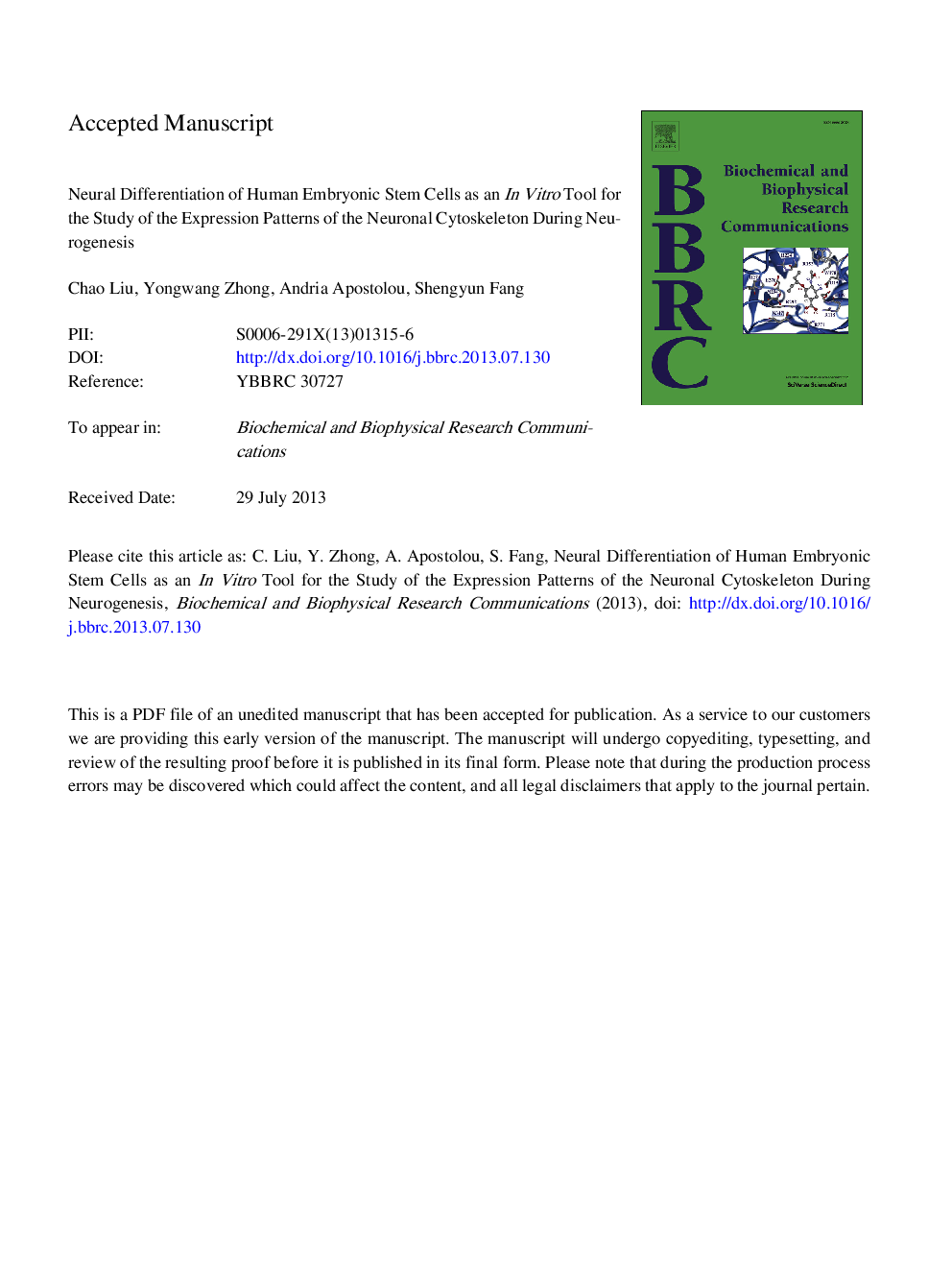| Article ID | Journal | Published Year | Pages | File Type |
|---|---|---|---|---|
| 10758294 | Biochemical and Biophysical Research Communications | 2013 | 20 Pages |
Abstract
The neural differentiation of human embryonic stem cells (ESCs) is a potential tool for elucidating the key mechanisms involved in human neurogenesis. Nestin and β-III-tubulin, which are cytoskeleton proteins, are marker proteins of neural stem cells (NSCs) and neurons, respectively. However, the expression patterns of nestin and β-III-tubulin in neural derivatives from human ESCs remain unclear. In this study, we found that neural progenitor cells (NPCs) derived from H9 cells express high levels of nestin and musashi-1. In contrast, β-III-tubulin was weakly expressed in a few NPCs. Moreover, in these cells, nestin formed filament networks, whereas β-III-tubulin was distributed randomly as small particles. As the differentiation proceeded, the nestin filament networks and the β-III-tubulin particles were found in both the cell soma and the cellular processes. Moreover, the colocalization of nestin and β-III-tubulin was found mainly in the cell processes and neurite-like structures and not in the cell soma. These results may aid our understanding of the expression patterns of nestin and β-III-tubulin during the neural differentiation of H9 cells.
Keywords
Related Topics
Life Sciences
Biochemistry, Genetics and Molecular Biology
Biochemistry
Authors
Chao Liu, Yongwang Zhong, Andria Apostolou, Shengyun Fang,
